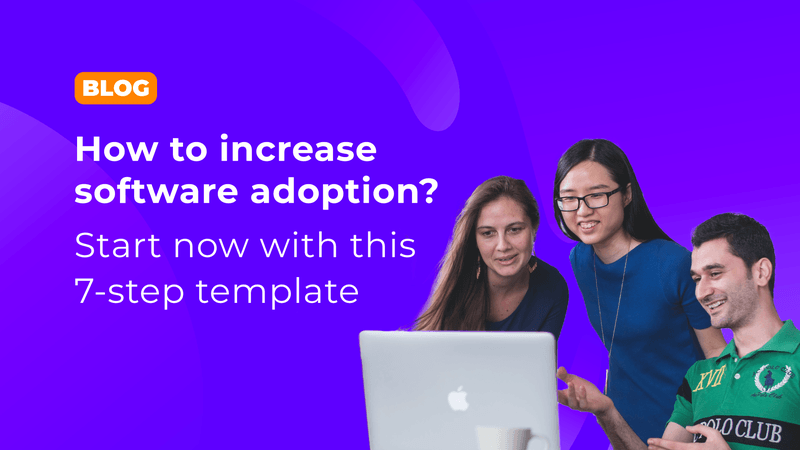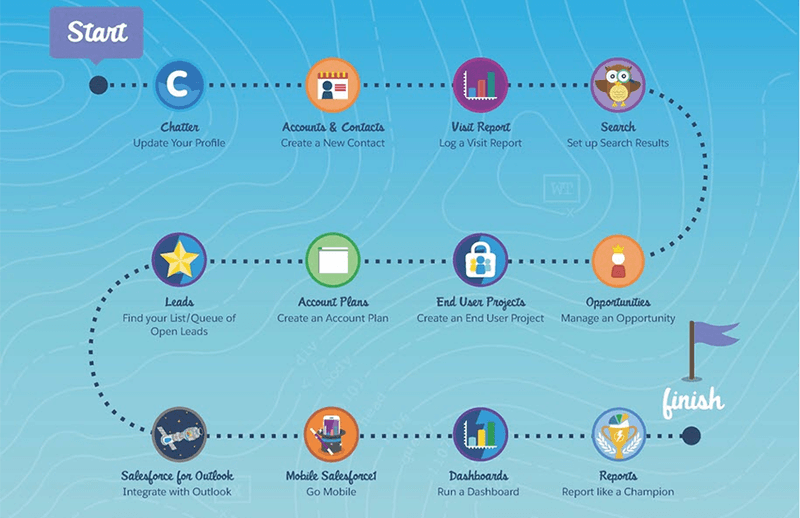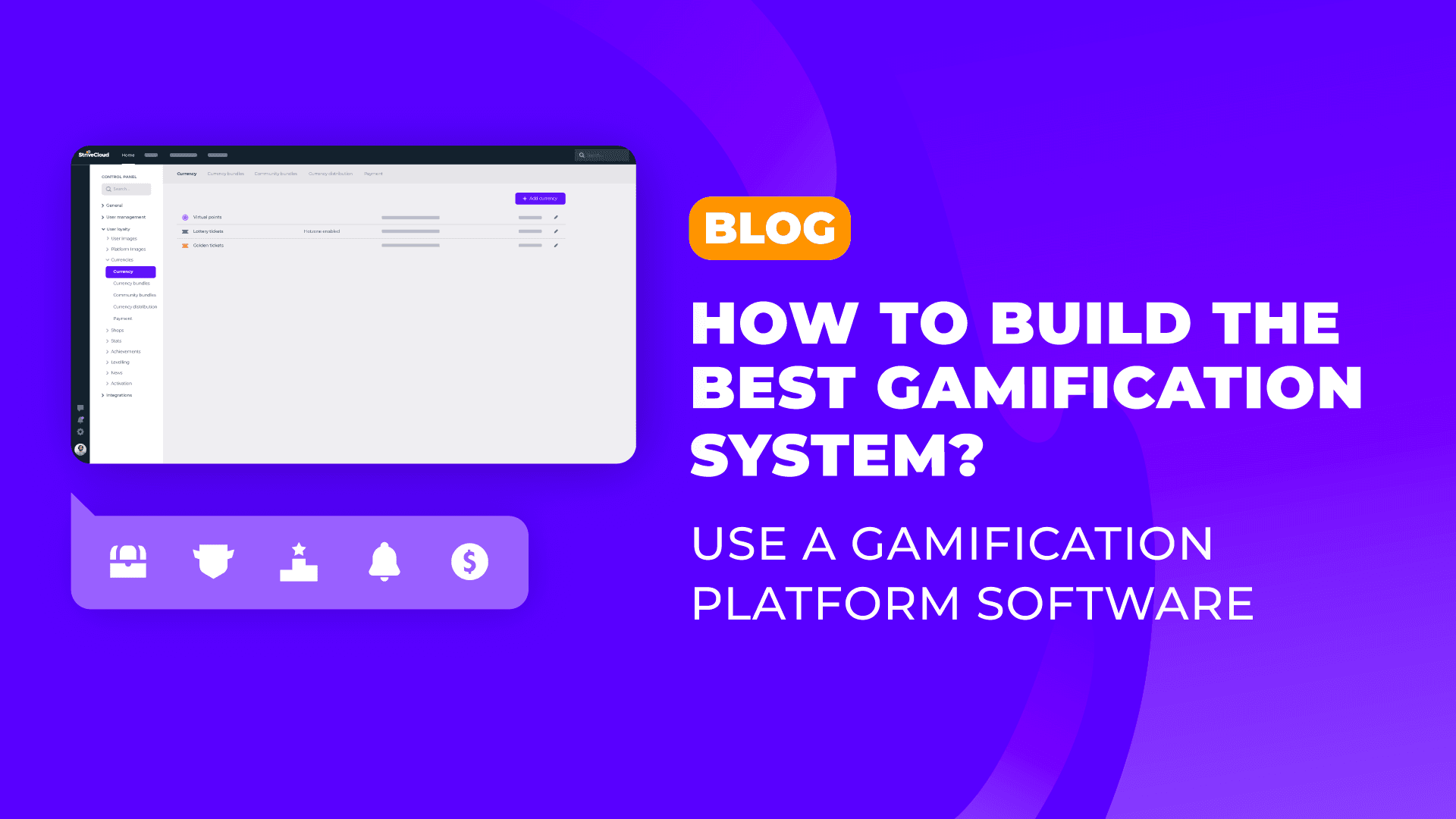

How to increase software adoption? Start now with this 7-step template.
How to increase software adoption? Start now with this 7-step template.

Learning how to improve your software adoption plan can be an intensive process. But it doesn’t have to be! With our user adoption strategy template, you can easily create your very own roadmap to success.
In this article, we’ll cover the step-by-step process of developing a user adoption strategy for SaaS and explore some of our best tips and tools you can use to generate growth.
- What is a user adoption strategy in SaaS?
- Why do SaaS companies need a software adoption strategy?
- When does onboarding end and adoption begin?
- How to measure product adoption & customer onboarding?
- Why increasing customer lifetime value is key for SaaS companies
- Guide your plan with this 7-step SaaS user adoption strategy template
- 5 ways SaaS companies can improve software adoption today
- FAQ
What is a user adoption strategy in SaaS?
A user adoption strategy is your plan to convert prospects and acquisitions into loyal users. But it’s more than simply achieving conversions. Ideally, a great strategy reveals what behaviors foretell product adoption - and then how to increase that behavior!
Download our Free User Adoption Strategy Template here 👉
Why do SaaS companies need a software adoption strategy?
A user adoption strategy is high in scope and high in benefits! Mainly, your strategy will positively impact the first stages of the customer journey, resulting in increased product adoption. But why is it important to have an efficient software adoption plan?
Low user adoption means higher churn and acquisition costs
If you’re losing customers to churn, you’re forced to replace them. But that’s expensive! Research shows that acquisition is up to 7 times more expensive than retention.
Fully adopted users are more likely to realize your customer value
A great user adoption strategy is also a template for a feature discovery strategy. As a result, your perceived value increases. Of course, nobody wants to pay for features they never use!
Download our Free User Adoption Strategy Template here 👉
Simply put, increasing customer lifetime value is profitable!
Even a tiny 5% rise in customer retention can increase revenue by as much as 95%.
Stop churn and kick-start your product adoption strategy! Read our complete guide on how to increase software adoption.
When does onboarding end and adoption begin?
The line between onboarding and adoption is blurry, but there are ways to tell the difference. Firstly, ‘onboarded’ users generally have higher user engagement with various features. As such, they also demonstrate a better understanding of your value - and that means they’re primed for software adoption.
How to measure product adoption & customer onboarding?
Before you can tackle how to increase software adoption, you must be able to measure your progress! That’s why product managers use Cohort Analysis. In short, segment users by acquisition date and then track their journeys using these key metrics:
- Conversion rate. This calculates the total number of users who make it from signup to purchase. A leading example is Slack’s 30% conversion rate!
- Time to value. In essence, how long it takes to reach the ‘activation event’.
- Frequency of usage. Essentially, how often does user engagement occur?
- Average session duration. Longer sessions might mean your time to value is too long. Conversely, short sessions might be signs of frustration and churn!
Basically, Cohort Analysis shows you which user segments have the highest retention. After collating the data, you might start to notice patterns. When the best groups share results in a metric, then that is your way to increase software adoption in users!

This cohort analysis graph helps visualize user retention over time, a key metric for measuring the success of a software adoption strategy.
Download our Free User Adoption Strategy Template here 👉
Why increasing customer lifetime value is key for SaaS companies
Put simply, customer lifetime value (CLV) calculates the revenue gained throughout a customer’s lifespan. Without a doubt, if you craft an excellent software adoption plan, you will also boost your CLV. According to software research group SaaS Scout, the top 1% of customers are ready to spend 5 times more than the average customer.
Additionally:
- 65% of profits will be from existing customers.
- 77% of customers stick with one brand for more than 10 years.
- 66% of existing customers tend to spend more to increase rewards.
Sounds great! So how do you work out CLV? Follow the formula below:
Avg user value = Avg purchase value X Avg purchase frequency in one year
Guide your plan with this 7-step SaaS user adoption strategy template
#1 Understand your product's mission & vision
Your business objectives have to be true to your mission. This consistency is key to a memorable and coherent UX! More than that, basing your user adoption strategy on exactly why you do what you do makes the plan more sustainable. Look at this amazing example from HumanForest!
Download our Free User Adoption Strategy Template here 👉
#2 Know your customers!
It goes without saying that your strategy will resonate more if it matches your target audience! Besides your own goals, what are their goals? Understanding the core user needs and use cases will help you build better features & support to drive customer success!
Download our Free User Adoption Strategy Template here 👉
#3 Define the activation and adoption events
It’s imperative that you define when the user first experiences your value - the ‘activation event’ or AHA moment. How long does it take to get there? What steps do they take?
After experiencing this moment, your user adoption strategy starts! How will you lead users to the right features? By leveraging methods like cohort analysis you’ll be able to find out which behaviors lead to long-term retention and customer value.
In fintech, for example, activation could be opening an account - whereas adoption might mean making a cash deposit. Then, expanding on other features or services. It’s up to you to define what’s best for your app!
Download our Free User Adoption Strategy Template here 👉
#4 Arm yourself with the best tools to increase software adoption
After defining your desired user events, it’s time to set up the tool stack to drive those behaviors! Besides support software like chat functions or forums, in-app tools are more direct for creating product-led growth.
For instance, some tools focus on onboarding, whilst others go deeper into feature adoption or user engagement. Here are some examples:
- Apty: Revolutionize your walkthroughs and tooltips. Apty is the highest-rated product adoption software on P2P review site G2. It’s ideal for enterprise brands.
- Appcues: Build a personalized experience. When you want to increase feature discovery, try Appcues. Easily add messages without any code!
- StriveCloud: Create a sticky UX that users love. StriveCloud’s app gamification software is flexible and easy to use. Design, test, and build gamified in-app experiences from a single control panel. Plus, it boosts daily active users by 58%!
Download our Free User Adoption Strategy Template here 👉
#5 Develop an onboarding plan that drives adoption
It’s simple - lengthy onboardings frustrate users. The key step of your software adoption plan is to make onboarding interactive! Use as few screens as possible, then opt for timely tooltips over mandatory tutorials. Furthermore, use gamified tactics such as progress bars, rewards, and leveling systems to keep your user engaged.
Download our Free User Adoption Strategy Template here 👉
#6 Plan for continual optimization
You can’t rest on your laurels. Using your mission & vision as a guide, you must continue to improve your app. To do this, make it easy for users to return feedback. Additionally, try to increase the adoption of any underused features that threaten to devalue your product.
Download our Free User Adoption Strategy Template here 👉
#7 Encourage adopters to become loyal brand advocates
At this point, you know who your ideal users are. After identifying them, and converting them with your great product, you need to give them the tools to promote your product! Integrate your brand with social media, incentivize referrals, and implement a loyalty program that rewards loyal users. After all, customers are much more likely to choose your brand if you offer a loyalty program.
Maximize the benefits of our user adoption strategy template with an expert-led gamification workshop & go home with a custom plan!
5 ways SaaS companies can improve their software adoption plan today
Focus on data-driven, goal-based user engagement
Your data is the best guide to achieving success. Once you’re able to interpret your data, you can use it to drive your software adoption plan and develop ambitious targets. Duolingo is famous for its goal of increasing user engagement by 1% every week - and sticks to it religiously. Along with its daily streak feature, they have become the top education app in the US!
Establish self-set goals and define the key milestones
Customers want to know how you are going to get them from A to B. Given this, you should establish the roadmap they have to journey to solve their problem. That includes key milestones which will act as positive reinforcement to continue engaging. You could take the route of Salesforce and gamify the user adoption journey to make it both clear and exciting.

Salesforce Trailhead uses timed challenges and milestone badges to make learning interactive and encouraging, a powerful technique for user adoption.
Build a customer community
One of the most powerful and pervasive motivators is the need to belong. That might be why active in-app communities have been found to boost user retention rates by 40%! As a bonus, an active community builds credibility with like-minded prospects. In short, if it’s good enough for them - why not me?
Choose the right software adoption tool and software!
The right tools can significantly accelerate your software adoption plan. However, it’s crucial to pick the right one, as this software will become a key part of your user experience. How easy is it to use? Can you customize it? Is the support team hands-on or not? What are its main and additional functionalities? Do these fit your goals?
Deploy a competitive strategy with app gamification
Today, over 2/3 of customers say their standard for good experiences is higher than ever! In practice, a great UX needs to be 3 things: useful, easy, and enjoyable to use. And that’s where app gamification excels! Don’t fall behind - gamify your app and get ahead.
Get that competitive advantage! Build a gamified experience & slash churn by 23% from just 1 solution!
FAQ
What is a user adoption strategy in SaaS?
A user adoption strategy is your plan to convert prospects and acquisitions into loyal users. But it’s more than simply achieving conversions. Ideally, a great strategy reveals what behaviors foretell product adoption and how to increase that behavior!
Why do SaaS companies need a software adoption strategy?
When research shows that acquisition is up to 7 times more expensive than retention, the benefits of a good user adoption strategy become clear. Not to mention, adopted users are more likely to see your full value - increasing their customer lifetime value!
When does onboarding end and adoption begin?
The line between onboarding and adoption is blurry, but there are differences. Firstly, ‘onboarded’ users engage more and in a wider breadth. As such, they also demonstrate a better understanding of your value - meaning they’re primed for software adoption!
Related Posts

Top tips on how to build a successful app gamification strategy
Why do gamified apps have higher engagement? App gamification is not just a gimmick. We've seen successful examples from fintech, health, mobility,... The science works! So how can you design & implement your own gamification strategy? Find out here!

How to build the best gamification system? Use a gamification platform software.
Implementing gamification is difficult - it requires expertise and can be costly. How to skip these barriers and build a better gamification system? Use a gamification platform software and benefit from the know-how of gamification experts! Find out what you need to know!

